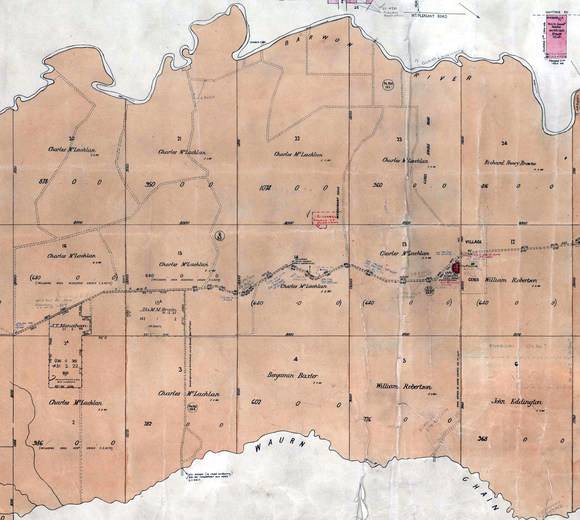| Back to search results » | Back to search page » |
|
Ceres Primary School
Statement of Significance
What is Significant? How is it significant? The timber shelter shed at the Ceres Primary School, 605 Barrabool Road, Ceres, is aesthetically significance at a LOCAL level. Why is it significant? Ceres Primary School, 605 Barrabool Road, has social significance for the important educational role the site has played in the life and development of local school children since 1875 until the present day (Criterion G). It is recognised and valued by sections of the Ceres community for this reason. The hipped roofed timber shelter shed at the Ceres Primary School, 605 Barrabool Road, has aesthetic significance as a rare known surviving example of an interwar State School outbuilding that demonstrates its original design (Criterion E). The modest scale and hipped form, together with the timber weatherboard wall cladding with timber lattice screening in the upper portions, and the exposed timber rafters in the eaves are those intact design traits that reflect its original appearance. While reflecting a standardized design approach by Percy Everett, Chief Architect of the Public Works Department, it is now one of few known to be extant. The early Ceres Primary School building, 605 Barrabool Road, has aesthetic interest as a surviving amalgam of standardized State School design philosophies in the 19th and mid 20th centuries. This is evidence in the rectangular layout, Barrabool stone walls and single timber framed 12 paned double hung windows (reflective of the original design by Henry Bastow in 1875) and in the shallow-pitched roofs, raised roofed portion with clerestorey windows, broad eaves and banks of timber framed windows (a legacy of the major modernization designed by Percy Everett in 1949). While of aesthetic interest, the school building is not considered to have sufficient integrity of either era to meet an aesthetic/architectural significance threshold. There are more intact examples of single roomed State School designs of the 1870s in the Greater Geelong area, while there are more substantial and intact, purpose-built mid 20th century school buildings that embody the Modern design philosophies for State Schools by Percy Everett in Victoria.
Ceres Primary School, 605 Barrabool Road, has significance as an educational and community hub since 1875 valued by the local Ceres community. Constructed as a one-roomed gabled school building of local Barrabool stone in 1875, it represented a standard Education Department styled 80-type school designed by the Chief Architect of the Department, Henry Bastow. Today, the school is an amalgam of the original design and the major alterations carried out by the Chief Architect of the Public Works Department, Percy Everett in 1949-50, following substantial storm damage to the school in 1948. In addition to being an important education centre for local Primary school children, the school has played host to different community activities including Arbor Day tree plantings in the early 20th century. The fabric of significance includes the centrally-located stone school building, mature Washingtonia Robusta Palm tree at the front and the hipped roofed timber shelter shed (built in 1934 probably to a design by the Chief Architect of the Public Works Department, Percy Everett). This shelter shed is a rare known surviving interwar example of a State School pavilion in the Greater Geelong area.
Ceres Primary School, 605 Barrabool Road, Ceres, is historically and socially significant at a LOCAL level.
Ceres Primary School, 605 Barrabool Road, has historical significance for its enduring associations with the development and progress of State education for local school children since 1875 (Criterion A). From this time, the school has been the centre for education and social activities in the Ceres area. It has associations with several teachers and locals, including John Matthew Hartshorn, first Head Teacher who served from 1875 until 1894 (and previously as Head Teacher at Barrabool Hills Common School No. 50 from 1867) (Criterion H). Hartshorn and other staff that followed were the guiding forces in the education of local children. The school also has associations with Henry Bastow, Chief Architect of the Education Department, who was responsible for the original gabled school building; and Percy Everett, Chief Architect of the Public Works Department who designed the "Modern" shallow pitched roofed alterations in 1949 following substantial storm damage to the building. The historical significance of the Ceres School is embodied in the surviving historic fabric: centrally located early school building constructed of Barrabool stone (an amalgam of different standard design philosophies for School buildings in the 19th and mid 20th centuries), mature Washingtonia Robusta Palm tree at the front of the site (which appears to have been planted in 1901 to celebrate the raising the Union Jack flag at the School for the first time); and the hipped roofed timber shelter shed (built in 1934 probably to a design by Percy Everett, having replaced an earlier pavilion on the site).
Group
Education
Category
School - State (public)

































